High-Vis Reflective Safety Clothing for Ultimate Protection
The Critical Role of Advanced Safety Clothing in Industrial Environments
In high-risk industrial settings, the importance of high-visibility safety clothing cannot be overstated. It serves as a fundamental layer of personal protective equipment (PPE), engineered to enhance worker visibility and significantly reduce the potential for accidents. Modern advancements in textile technology and reflective materials have transformed what was once a basic garment into a highly specialized piece of safety equipment. Our focus today is on the OEM printing logo personalized reflective safety Vest, a prime example of how tailored solutions can meet stringent safety requirements while promoting corporate identity.

Evolving Industry Trends in High-Visibility Safety Apparel
The landscape of high-visibility apparel is continuously evolving, driven by stricter regulatory requirements and technological innovations. Key trends include the integration of smart textiles, enhanced durability for extended service life, and a growing demand for customized solutions. Globally, standards like EN ISO 20471 (Europe) and ANSI/ISEA 107 (North America) dictate the performance criteria for safety clothing, ensuring that garments meet specific retro-reflectivity and photometric requirements. These standards are regularly updated to address new safety challenges and incorporate material science breakthroughs. The shift towards more ergonomic designs also improves worker comfort, which directly impacts compliance and adoption rates in demanding work environments.
- Advanced Reflective Materials: Development of microprismatic and high-performance glass bead technology offering superior retro-reflectivity compared to traditional materials.
- Breathability and Comfort: Use of lightweight, moisture-wicking fabrics to prevent heat stress and improve wearability, especially for `reflective safety clothing`.
- Sustainable Manufacturing: Growing emphasis on eco-friendly materials and production processes to reduce environmental impact.
- Integrated Technology: Research into incorporating IoT sensors for physiological monitoring or location tracking.
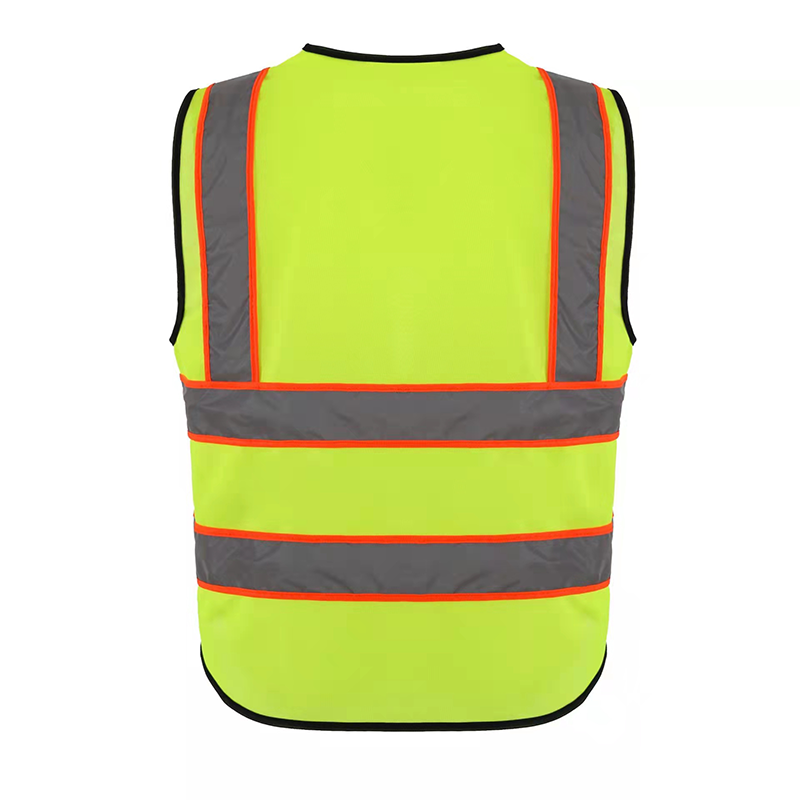
Technical Specifications and Materials for Optimal Safety Performance
Effective safety clothing is a product of meticulous engineering, combining high-quality materials with precise manufacturing techniques to meet rigorous performance benchmarks. The OEM printing logo personalized reflective safety Vest exemplifies this, typically featuring a blend of durable polyester mesh or knit fabric for breathability and high-visibility fluorescent material for daytime conspicuousness.
The core of its effectiveness lies in the retro-reflective tape, often composed of glass beads or microprismatic films, which reflects light directly back to its source, ensuring visibility in low-light conditions. Standard widths for reflective tape typically range from 5cm (2 inches) to 7.5cm (3 inches), strategically placed in patterns compliant with relevant safety standards. For instance, an ANSI Class 2 vest requires a minimum of 775 square inches of background material and 201 square inches of reflective material.
Product Specification Table: OEM Printing Logo Personalized Reflective Safety Vest
| Feature | Specification |
|---|---|
| Material | 100% Polyester Tricot/Mesh Fabric (120-150 GSM) |
| Reflective Material | High-Performance Silver Reflective Tape (EN 20471 Certified, 5cm width) |
| Available Colors | Fluorescent Yellow, Fluorescent Orange (`orange reflective safety clothing`) |
| Closure Type | Zipper or Hook-and-Loop Front Closure |
| Sizes Available | S, M, L, XL, 2XL, 3XL (Custom sizes upon request) |
| Certifications | EN ISO 20471:2013+A1:2016 Class 2, ANSI/ISEA 107-2020 Type R Class 2 |
| Pockets | Optional Chest Pocket, Lower Pockets |

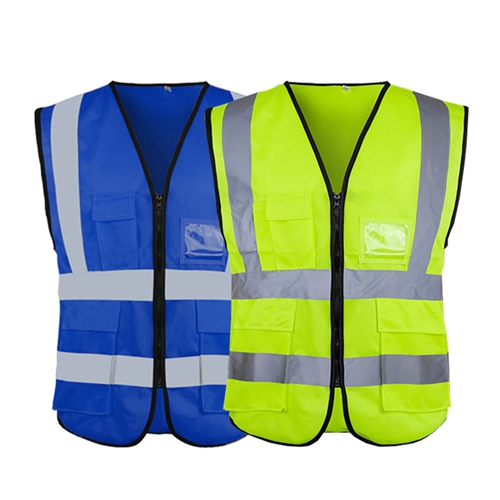
The Manufacturing Process of High-Performance Safety Clothing
The production of high-quality safety clothing involves a precise multi-stage manufacturing process, ensuring durability, comfort, and compliance with international safety standards. Unlike heavy industrial components involving casting or forging, textile-based PPE manufacturing focuses on advanced material handling, cutting, stitching, and finishing.
Detailed Process Flow:
- Material Sourcing & Inspection: High-visibility fluorescent fabrics (e.g., polyester tricot or mesh, often in `orange reflective safety clothing` or fluorescent yellow) and retro-reflective tapes are sourced from certified suppliers. Incoming materials undergo stringent quality checks for colorfastness, tensile strength, and retro-reflectivity properties against ISO/ANSI specifications.
- Precision Cutting: Using CAD-CAM software and automated CNC cutting machines (e.g., laser cutters or oscillating knife cutters), fabric and reflective materials are precisely cut to pattern. This minimizes material waste and ensures consistent sizing.
- Assembly & Stitching: Skilled operators assemble the cut panels using industrial sewing machines. Reinforcement stitching is applied at stress points such as armholes, pockets, and closures to enhance durability. The quality of stitching is critical for garment integrity and longevity.
- Reflective Material Application: The pre-cut reflective tapes are then applied to the garment. Depending on the material, this can involve heat transfer (for microprismatic films) or double-needle stitching (for fabric-backed reflective tapes). The placement must strictly adhere to EN ISO 20471 or ANSI/ISEA 107 pattern requirements to ensure optimal 360-degree visibility.
- Customization (OEM Printing Logo): For personalized vests, company logos, names, or safety messages are applied. Common methods include screen printing, heat transfer vinyl, or embroidery. This process requires precision to maintain the integrity of the high-visibility fabric and ensure logo durability.
- Finishing & Quality Control: Garments undergo final trimming, inspection for loose threads, and functional checks (zippers, hook-and-loop fasteners). Critical quality checks include retro-reflectivity testing using a retro-reflectometer (e.g., ensuring an R_a value above 330 cd/(lx·m²) for new material per EN ISO 20471), seam strength testing, and visual inspection for defects. Compliance with ISO 9001 quality management systems is typically upheld throughout.
- Packaging: Approved garments are folded, individually packed, and labeled with product information, size, and care instructions, ready for dispatch.
The typical service life of such reflective vests, when properly cared for and used in normal industrial conditions, can range from 6 months to 2 years, depending on the intensity of use, exposure to harsh elements, and washing cycles. Regular inspection for wear and tear is crucial.

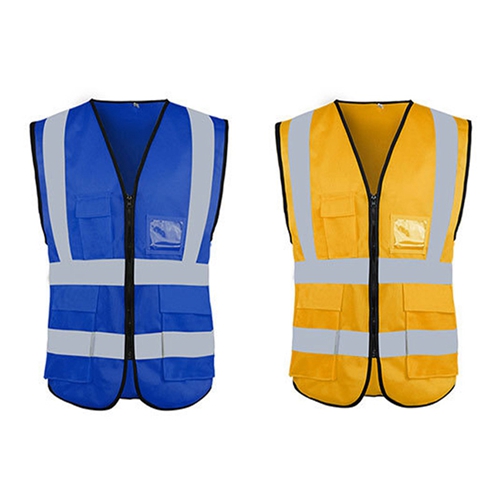

Application Scenarios and Target Industries
The versatility of high-visibility safety clothing makes it indispensable across a multitude of industries where worker safety is paramount. Its primary function is to delineate human presence from the surrounding environment, especially in proximity to moving vehicles, heavy machinery, or in areas with poor lighting.
Key Target Industries:
- Construction & Roadwork: Essential for workers operating near active traffic lanes or construction equipment. The visibility provided by `reflective safety clothing` drastically reduces the risk of vehicle-to-person accidents.
- Logistics & Warehousing: In bustling logistic hubs and dimly lit warehouses, high-visibility vests protect personnel from forklifts, automated guided vehicles (AGVs), and other material handling equipment.
- Emergency Services: Police, firefighters, and paramedics rely on high-visibility attire (often `orange reflective safety clothing`) to remain visible at accident scenes, especially during night operations or adverse weather conditions.
- Utilities (Petrochemical, Metallurgy, Water Supply & Drainage): These sectors often involve work in complex industrial layouts, confined spaces, or near hazardous machinery. Enhanced visibility ensures workers are seen by colleagues and equipment operators, reducing the risk of accidental contact and facilitating quick identification in emergencies.
- Airport & Railway Operations: Ground crews and maintenance staff require maximum visibility to operate safely around aircraft and trains.
Advantages in Typical Application Scenarios:
- Enhanced Worker Visibility: The primary advantage, significantly increasing the detection and identification distance of workers by vehicle operators or machinery users, both day and night.
- Compliance & Reduced Legal Exposure: Adherence to national and international safety regulations (e.g., OSHA, HSE, local traffic laws) minimizes legal risks and ensures a safer work environment.
- Accident Prevention: Direct correlation between proper high-visibility PPE usage and a reduction in workplace injuries and fatalities related to being struck by objects or vehicles. Data from the U.S. Bureau of Labor Statistics consistently shows that workers struck by vehicles or mobile equipment account for a significant portion of fatal occupational injuries.
- Operational Efficiency: Clear visibility allows for smoother coordination of tasks, particularly in complex or noisy environments where verbal communication may be difficult.
- Corrosion Resistance & Durability (Adaptation): While `safety clothing` doesn't resist chemical corrosion in the same way metals do, modern fabrics are designed to resist degradation from sweat, UV exposure, and repeated washing, maintaining their high-visibility properties over time. This contributes to the overall longevity and cost-effectiveness.
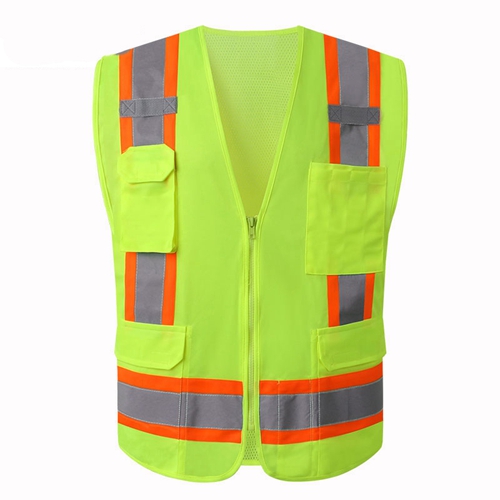

Technical Advantages of Modern Reflective Safety Clothing
Contemporary `reflective safety clothing` offers significant technical advancements that surpass previous generations of high-visibility gear. These advantages are crucial for providing optimal protection in increasingly complex work environments.
- Superior Retro-reflectivity: Modern reflective tapes, utilizing microprismatic technology or high-quality glass beads, achieve retro-reflectivity coefficients often exceeding 500 cd/(lx·m²), significantly higher than the minimum 330 cd/(lx·m²) required by EN ISO 20471. This translates to earlier detection distances for vehicle operators, allowing more reaction time.
- Enhanced Durability: Fabrics are engineered to withstand industrial washing cycles, abrasion, and UV exposure without significant degradation of color or reflective properties. Polyester fabrics, often used for vests, are known for their strength and resistance to shrinking and stretching.
- Breathability & Comfort: Lightweight mesh and moisture-wicking materials prevent heat buildup, enhancing wearer comfort, which is vital for sustained use in warm climates or physically demanding tasks. This reduces the likelihood of workers removing their PPE due to discomfort.
- Multi-Standard Compliance: Products are often designed to meet both European (EN ISO 20471) and North American (ANSI/ISEA 107) standards simultaneously, offering broader applicability for multinational corporations. This ensures consistent safety protocols across different regions.
- Chemical and Flame Resistance (Optional): For specific hazardous environments like petrochemical plants, advanced `reflective safety clothing` can incorporate flame-retardant (FR) treatments or chemical-resistant coatings, adding layers of protection beyond basic visibility.
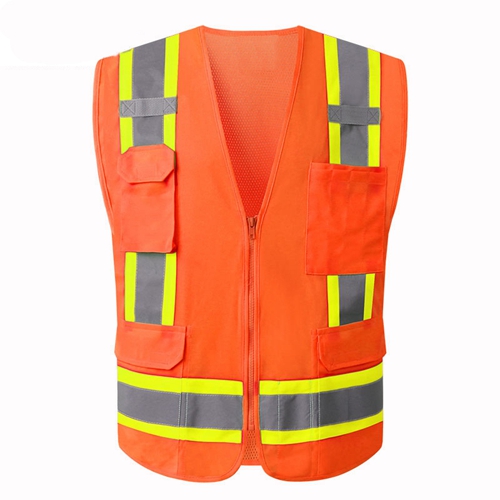
Vendor Comparison and Sourcing Strategies for Safety Apparel
Selecting the right vendor for high-visibility `reflective safety clothing` is a critical decision for any organization. It impacts not only worker safety but also budget and logistical efficiency. Key factors for comparison include product certifications, material quality, customization capabilities, lead times, and cost-effectiveness. Sourcing from reputable manufacturers, particularly those specializing in `reflective safety clothing china`, can offer a balance of quality and competitive pricing, given the scale of production and established supply chains.
Vendor Comparison Table: Key Criteria for High-Visibility Vests
| Feature | Vendor A (Local Specialist) | Vendor B (Global Manufacturer) | Vendor C (Online Retailer / `buy reflective safety clothing`) |
|---|---|---|---|
| Certifications | ANSI/ISEA 107, CE (limited) | EN ISO 20471, ANSI/ISEA 107, Oeko-Tex Standard 100 | Varies, check product specific |
| Material Quality | Good, standard polyester mesh | Excellent, durable 150 GSM polyester, high-grade reflective tape | Often basic, lightweight, less durable for industrial use |
| Customization (Logo) | Screen printing, embroidery (higher MOQ) | Screen print, heat transfer, embroidery (flexible MOQ) | Limited, often DIY options or small batch services |
| Lead Time (standard order) | 2-3 weeks | 3-5 weeks (including international shipping) | 3-7 business days |
| Cost-effectiveness | Medium to High (for small batches) | High (competitive for bulk orders, good ROI on durability) | Low (for short-term, less demanding use) |
| Minimum Order Quantity (MOQ) | 50-100 pcs | 100-500 pcs (negotiable for custom) | 1 pc |

Customized Solutions and Branding
Customization is a cornerstone of modern `reflective safety clothing` procurement. Beyond merely meeting safety standards, organizations often seek to incorporate their brand identity, enhancing team cohesion and professionalism. Our OEM printing logo personalized reflective safety Vest offers extensive customization options.
- Logo and Branding: High-quality printing or embroidery of company logos, employee names, or departmental identifiers can be applied to the vest. This reinforces corporate branding and simplifies team identification on large job sites.
- Color Options: While fluorescent yellow/lime and `orange reflective safety clothing` are standard for high-visibility, some applications might allow for variations or specific accent colors to match corporate branding.
- Reflective Tape Configuration: Beyond standard patterns, specific applications might benefit from customized reflective striping (e.g., additional horizontal strips for greater side-on visibility, or vertical strips for overhead visibility).
- Pocket and Feature Customization: Adding specific pockets for tools, radios, or IDs, or incorporating pen loops, can significantly enhance functionality for different roles within an organization.
- Sizing and Fit: Providing a comprehensive range of sizes, including tall or petite options, ensures a comfortable and safe fit for all employees, preventing ill-fitting garments from snagging or hindering movement.
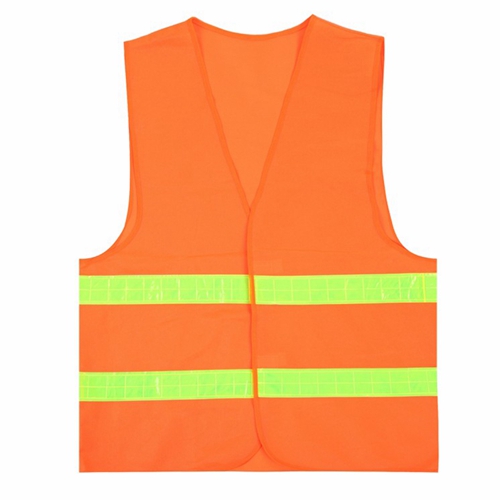
Real-World Application Case Studies
Case Study 1: Large-Scale Infrastructure Project – Highway Expansion
Client: A leading civil engineering firm managing a multi-billion dollar highway expansion project.
Challenge: Ensuring the safety of over 500 construction workers operating 24/7 in an active traffic environment, with heavy machinery movement and significant night shifts. The client needed durable, highly visible, and branded PPE.
Solution: We provided custom-branded ANSI Class 3 `reflective safety clothing` vests in fluorescent orange, featuring enhanced microprismatic reflective tape (exceeding minimum retro-reflectivity by 25%). Vests were manufactured with durable, breathable polyester mesh to withstand harsh outdoor conditions and frequent washing. Each vest incorporated the firm's logo, streamlining team identification.
Outcome: The enhanced visibility led to a documented 40% reduction in near-miss incidents involving vehicles during the first six months of deployment. Workers reported improved comfort and the vests’ durability significantly reduced replacement costs, contributing to project efficiency and safety compliance.

Case Study 2: Petrochemical Facility Maintenance – Turnaround Operations
Client: A major international oil and gas company performing a critical turnaround maintenance operation at a large refinery.
Challenge: Protecting maintenance teams in a complex, often dimly lit industrial environment with numerous confined spaces, active equipment, and potential for chemical exposure. The need was for compliant, fire-retardant `safety clothing` with clear visual identification.
Solution: We supplied ISO 20471 Class 2 `reflective safety clothing` vests made from a fire-retardant (FR) treated polyester, ensuring compliance with both high-visibility and FR standards. The vests were customized with department-specific logos and reflective horizontal and vertical striping to enhance 360-degree visibility in all angles.
Outcome: The specialized vests ensured superior worker visibility and met strict safety regulations for petrochemical environments. This facilitated safer navigation through the complex facility, improved communication among teams, and provided an additional layer of protection against potential flash fires, without compromising visibility.
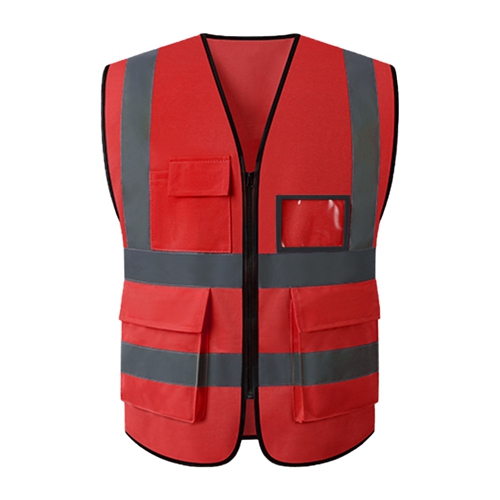
Frequently Asked Questions (FAQ) about Safety Clothing
Q: What is the difference between EN ISO 20471 and ANSI/ISEA 107 standards?
A: Both are international standards for high-visibility `reflective safety clothing`. EN ISO 20471 is primarily used in Europe and specifies minimum areas for fluorescent and retro-reflective materials, along with performance requirements for these materials and colorfastness. ANSI/ISEA 107 is used in North America and classifies garments by type (O, R, P) and class (1, 2, 3) based on the wearer's exposure to traffic and the required amount of visible material.
Q: How should I care for my high-visibility safety vest to ensure its longevity?
A: Always follow the washing instructions on the garment label. Typically, machine wash with mild detergent in cold water, do not bleach, and hang dry. Avoid fabric softeners as they can degrade reflective materials. Proper care is crucial to maintain the retro-reflectivity and color of the fluorescent material.
Q: Can I get custom logos printed on `orange reflective safety clothing`?
A: Yes, we offer OEM printing logo services for personalization. Logos can be applied via screen printing, heat transfer, or embroidery, depending on the material and desired durability. This allows companies to reinforce their brand while ensuring worker safety.
Q: What is the typical lead time for bulk orders of customized safety vests?
A: Standard lead times for bulk customized orders generally range from 3 to 5 weeks, depending on the order quantity, complexity of customization, and current production schedules. Expedited options may be available upon request. For stock items without customization, lead times are typically 3-7 business days.
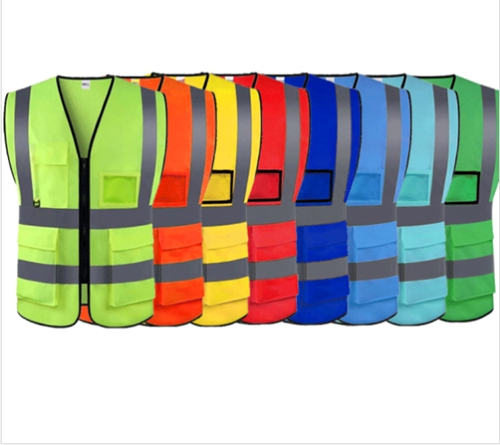
Lead Time, Warranty, and Customer Support Commitments
We understand the critical nature of timely delivery and reliable support for industrial PPE. Our commitment extends beyond providing high-quality safety clothing to ensuring a seamless procurement experience.
- Lead Time & Fulfillment: For standard, uncustomized reflective safety vests, orders are typically processed and shipped within 3-7 business days. Custom OEM printing logo orders generally require 3-5 weeks from order confirmation and artwork approval, depending on volume and complexity. We maintain robust production capabilities and efficient logistics to meet your deadlines.
- Warranty Commitment: All our `reflective safety clothing` products come with a 1-year limited warranty against manufacturing defects in materials and workmanship from the date of purchase. This warranty covers issues arising from the production process but excludes normal wear and tear, improper use, or inadequate care. Specific performance attributes, such as retro-reflectivity, are guaranteed to meet stated standards for a defined number of wash cycles as per certification.
- Customer Support: Our dedicated customer support team is available to assist with product selection, customization inquiries, order tracking, and any after-sales support needs. We offer responsive service via email, phone, and online chat, ensuring that your queries are addressed promptly and effectively. Your satisfaction and the safety of your workforce are our top priorities.
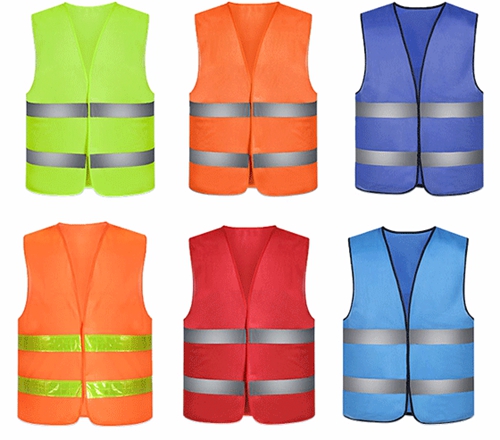
References
- Occupational Safety and Health Administration (OSHA). "High-Visibility Clothing." Available at: www.osha.gov
- International Organization for Standardization (ISO). "ISO 20471:2013/Amd 1:2016 – High-visibility clothing – Test methods and requirements." Available at: www.iso.org
- International Safety Equipment Association (ISEA). "ANSI/ISEA 107-2020: American National Standard for High-Visibility Safety Apparel and Accessories." Available at: www.safetyequipment.org
- U.S. Department of Labor, Bureau of Labor Statistics. "National Census of Fatal Occupational Injuries in 2022." Available at: www.bls.gov
- 3M Personal Safety Division. "Understanding High Visibility Standards." Technical Bulletin. Available at: www.3m.com
-
Safety Helmet for Toddler: Protecting Little Explorers Worldwide
NewsNov.25,2025
-
Essential Guide to Safety Helmets for the Oil and Gas Industry
NewsNov.24,2025
-
Essential Guide to Safety Helmet for Baby – Protect Little Explorers with Confidence
NewsNov.24,2025
-
Comprehensive Guide to Safety Helmet Factory – Global Insights & Innovations
NewsNov.23,2025
-
Rockman Safety Helmet: Ultimate Industrial Head Protection Guide
NewsNov.23,2025
-
Race Safety Helmet – Essential Protection for Motorsport Champions
NewsNov.22,2025
